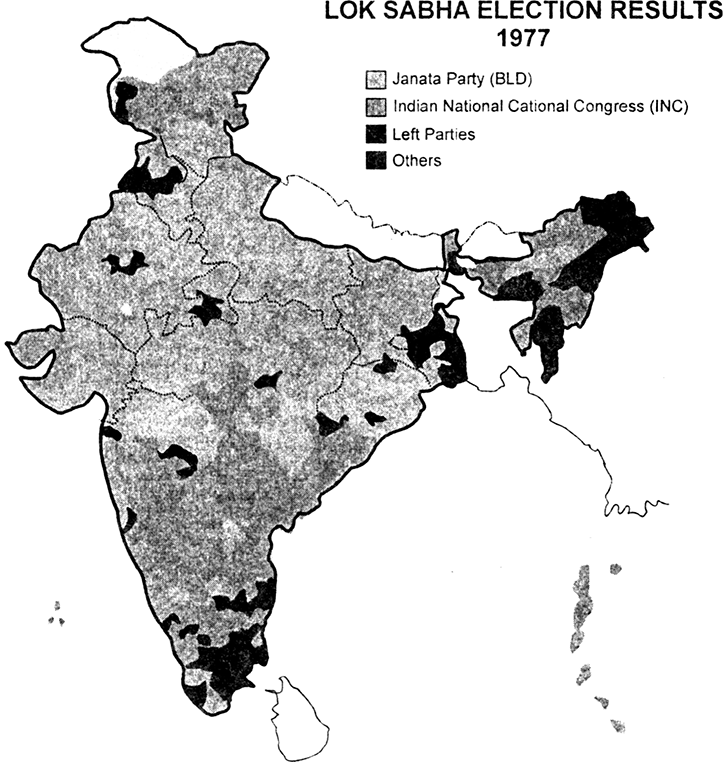The Crisis of Democratic Order
Read the map given below and answer the questions that follow :

(i) Identify the States where Congress lost,
(ii) Congress lost very badly and
(iii) those States where Congress and its allies nearly swept the polls.
(i) Haryana, Himachal Pradesh, UP, Bihar, West Bengal, Madhya Pradesh, Rajasthan, Tamil Nadu.
(ii) In Haryana, UP, Bihar, Delhi, Punjab, the Congress could not win even a single seat. In Rajasthan and Madhya Pradesh it could win only one seat each.
(iii) In Andhra Pradesh, Kerala, Karnataka i.e., the southern States Congress and its allies swept the polls.
Sponsor Area
Some More Questions From The Crisis of Democratic Order Chapter
What reasons did the Government give for declaring a National Emergency in 1975 ?
The 1977 elections for the first time saw the Opposition coming into power at the Centre. What would you consider as the reasons for this development ?
Discuss the effects of Emergency on the following aspects of our polity :
• Effects on civil liberties for citizens.
• Impact on relationship between the Executive and Judiciary.
• Functioning of Mass Media.
• Working of the Police and Bureaucracy.
In what way did the imposition of Emergency affect the party system in India ? Elaborate your answer with examples.
Read the passage and answer the questions below :
Indian democracy was never so close to a two-party system as it was during the 1977 elections. However, the next few years saw a complete change. Soon after its defeat, the Indian National Congress split into two groups ................ The Janata Party also went through major convulsions ........ David Butler, Ashok Lahiri and Prannoy Roy. –Partha Chatterjee
(a) What made the party system in India look like a two-party system in 1977 ?
(b) Many more than two parties existed in 1977. Why then are the authors describing this period as close to a two-party system ?
(c) What caused splits in Congress and the Janata parties ?
Describe the main causes for students unrest in Gujarat and Bihar in 1974.
Where did the Naxalite Movement begin is 1967 ?
Who formed CPI (Marxist-Leninist) ?
When did Jayaprakash Narayan lead the march to Parliament ?
What was the decision of the Supreme Court in the famous Kesavananda Bharati case?
Mock Test Series
Sponsor Area
NCERT Book Store
NCERT Sample Papers
Sponsor Area